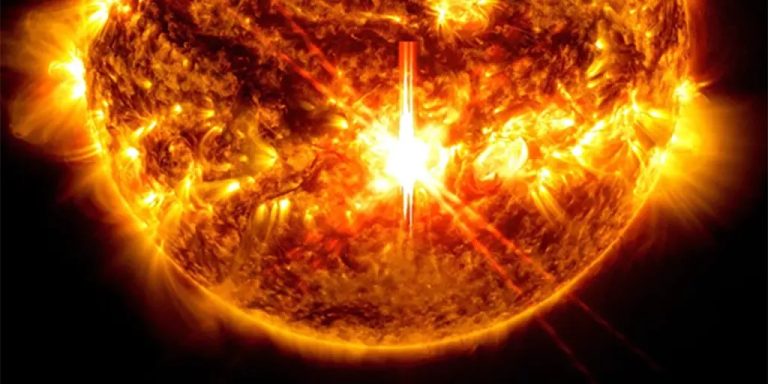
Overview
Solar Cycle 25 is approaching its solar maximum, and as is typical at this stage of the solar cycle, the sun has been very active in recent weeks, with a large number of sunspots appearing. Earlier today, the most powerful solar flare of this solar cycle occurred in a sunspot region, officially known as “AR3842.” NASA's Solar Dynamics Observatory recorded today's explosion as X9.0 (where the

detail
A solar flare is a powerful burst of energy that can affect radio communications, power grids, navigation signals, and pose risks to spacecraft and astronauts. Today's solar flare, the most powerful since Solar Cycle 25, peaked at 8:18 a.m. EDT and was captured as a bright flash by NASA's Solar Dynamics Observatory. Today's flare is classified as an X9.0 flare, with the X rating indicating the most intense type.
According to spaceweather.com, the flare's radiation ionized the top of Earth's atmosphere, triggering shortwave radio blackouts in Africa and Europe (the parts of the Earth that were exposed to sunlight at the time of the outburst). The shortwave radio blackouts experienced in Europe and Africa are due to radiation from solar flares reaching Earth and ionizing the upper atmosphere on arrival. This ionization creates a denser environment for high-frequency shortwave radio signals, thereby facilitating long-distance communications. As these radio waves pass through the ionized (charged) layer, they lose energy due to increased collisions with electrons, which can weaken or completely absorb the radio signal.

Preliminary coronagraph images show that the explosion site may hit the Earth on Sunday, October 6, with a “halo” coronal mass ejection, or CME (plasma and magnetic plume). So this weekend, auroras will appear at typically northern latitudes, and may appear further south than normal. A few days ago on October 1, an X7.1 solar flare and its associated coronal mass ejection from the same sunspot area were approaching the Earth and may arrive tomorrow, October 4, possibly triggering a strong geomagnetic storm.
The increase in solar activity over the past few weeks comes as Solar Cycle 25 approaches its maximum phase, which will likely be reached sometime in 2025. Around 2030. There won't be a day when the sun will be spotless in 2024 or 2023, and only once in 2022.
Meteorologist Paul Dorrian
Uckfield
arcfieldweather.com
Follow us on Facebook, twitterYoutube
Relevant
